
وبلاگ سپهران | Festivals | Iranian Ancient Ceremonies
Ancient festivals of Iran are as old as Iran’s civilization. Iran is an age-old land of peoples, civilization, culture, and customs. It is a land that, without a doubt, over the passage of history—thanks to its culture and civilization—has managed to overcome many ups and downs before it and has left positive effects on the civilizational and cultural sphere of the world around it. One of the most important cultural manifestations of any civilization is the customs that are performed on various occasions. Among these, the rites of feast and mourning can more than any other cultural element reflect the temperament of the people of a land, and therefore, knowing each of them on its own can be the best index of the culture and civilizational system of any society.
Iran, in terms of benefiting from the cultural capacity of rites, holds an eminent rank, and perhaps few civilizations can be cited that, in this regard, can keep pace with the land of Iran. To get acquainted with the ancient festivals of Iran, follow the Sepehran blog
Festivals are among the most important ritual ceremonies of Iran’s civilization and were counted among the religious behaviors of our ancestors. Therefore, the holding and honoring of each of them has a special importance and status. Of course, the totality of our information about how these festivals were held is limited in many cases, and what is published today within the framework of our knowledge is undoubtedly very little, and without a doubt many Iranian festivals and rites in the meantime have been consigned to oblivion, and there is no hope of discovering and redefining them. Nevertheless, what remains of these customs today is that on their basis one can set the Iranian civilization firm.
In the end, there are thousands of festivals and rites in Iran that are performed by various Iranian ethnic groups and in different seasons; each of which reflects the authentic and ancient history of this land.
“Nowruz” in Persian means “new day” and is the most important holiday of the year in Iran. The main message of Nowruz is the rebirth and renewal of nature. This ceremony is celebrated in many other countries across the Middle East, Central Asia, South Asia, the Balkans, and East Africa. The antiquity of this festival goes back at least 3,000 years. This holiday has changed over the thousands of years it has been celebrated. Thus, different regions have preserved, developed, or added different traditions.
This festival is held on the first day of Farvardin and is the spring equinox when the length of night and day is equal. Preparations for the festival begin weeks in advance. People clean their homes and renew their belongings.
Anything broken is repaired or replaced, and the house is decorated with flowers. By doing this spring cleaning, people wash away last year’s ills and prepare for better happenings in the new year. Setting the Haft-Sin table is one of the common traditions during Nowruz. Haft-Sin symbolizes life, love, health, and prosperity.
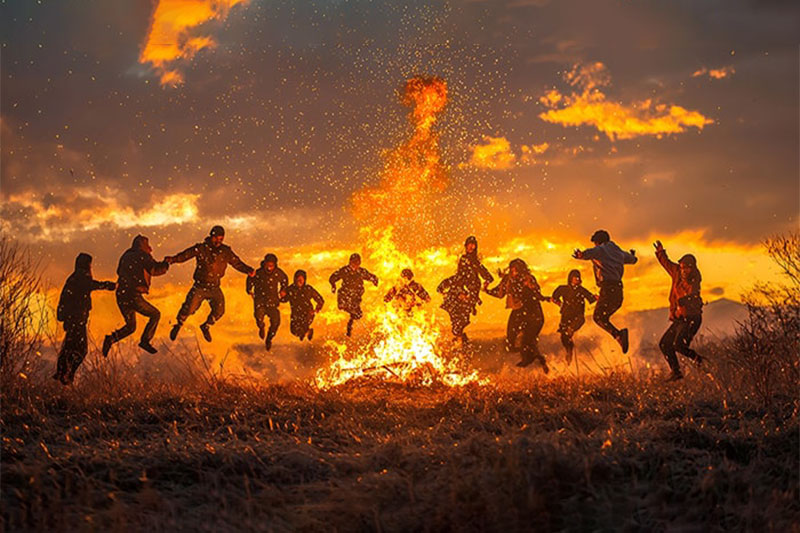
Chaharshanbe Suri, or the “Festival of Fire,” is a prelude to Nowruz that signals the arrival of spring. The Festival of Fire (Chaharshanbe Suri) is held on the last Wednesday of the year (as a sign of spring’s arrival). This ceremony is one of Iran’s ancient festivals. Thus, fire, meaning light, is for the hope of health and happiness in the coming year. Its antiquity goes back at least to 1700 BCE. Iranians celebrate an old tradition called “Chaharshanbe Suri.”
It is on the last Tuesday evening of each Iranian calendar year. Iranians come out with friends and family to celebrate and enjoy the occasion. With sunset, people light fires and gather around them to jump over them. As they do so, they chant “Take my yellowness, give me your redness.” In this rite they ask the fire to take away their pallor and problems and, in return, give them energy and warmth.
This festival usually begins at dusk. Some believe that jumping over the fire is a way to get rid of negative energy, illness, and problems, and in turn attract satisfaction, warmth, and energy. Chaharshanbe Suri is a cultural festival for many Iranians.
On this night, different traditions are performed in different cities of Iran. In addition to jumping over the fire, buying a special sweet-and-sour nut mix is done in almost all cities of Iran. It is believed that eating these nuts on Chaharshanbe Suri will make your wishes come true.
This festival has its roots in Iran’s ancient rites. Ancient Iranians celebrated Farvardingan in honor of the souls of the dead. This festival, Farvardingan or Hamaspathmaêdayah, is a festival that lasts ten days, that is, the last 5 days of Esfand and the first 5 days of Farvardin.
They believed that the souls of the dead would come to reunite with friends and family members. The seven holy immortals (Amesha Spenta) were venerated, and at the dawn of the new year there was a formal ceremony of farewell. People also included the souls of the departed in their joy.
During these days Iranians place food for receiving the souls next to the grave of the dead and on the rooftop of the house; in the provinces of Fars and Khwarazm they offer fragrant incense. This rite is very common among Zoroastrians of Kerman and Yazd. During these days, to receive the souls, they place various foods, fruits, and sweet snacks in their homes and in a special place.
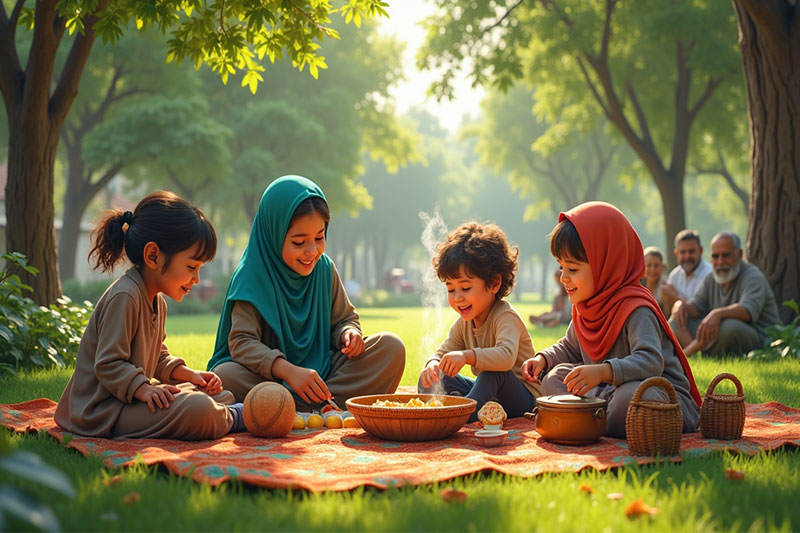
Sizdah Bedar is celebrated on Farvardin 13 as an ancient Nowruz tradition and belongs to the goddess of rain. In Iran there was a tradition that on the thirteenth day they would pray for abundant and timely rain. This tradition has faded over the centuries. On this day people go to green spaces and celebrate the last day of the Nowruz holidays outdoors. Ancient Iranians believed that Jamshid, the king of Iran who founded Nowruz, each year by spending time in lush nature under canopies and among the people, inaugurated the tradition of Sizdah Bedar. After a few years this tradition became established throughout the country.
Since then, after twelve days of joy at the beginning of the new year—which symbolized the twelve upcoming months—Iranians go to the plains and forests to celebrate the last day of their holidays with cheer and happiness.
Tirgan is one of the greatest festivals of ancient Iran. Traditionally this ceremony is held on the thirteenth day of the month of Tir (ancient days) in the Zoroastrian calendar and corresponds to the tenth of Tir of the solar year.
Zoroastrians celebrate this day every year in honor of Tishtrya and perform special rites. Tishtrya is a star that, in Iranian culture, heralds rain. It is also believed that Tishtrya is the brightest star in the sky, and with its appearance rain will soon fall. The annual Tirgan festival is the day when Arash the Archer, the legendary hero of Iran, shot his arrow to determine the border of Iran and sacrificed himself for his country. This day is also the festival of writers in ancient Iran.
The date of holding this festival is not the same in all regions and in all calendars. Below we state a list of the times of holding this festival in various parts of Iran:
Discussion of the background of the Barf-chal rite in the Mazandaran region reminds us of Seyyed Vali, the mystic and ascetic of the ninth century AH. The people of this land believe that he was a descendant of Imam Hasan al-Askari, and the spirituality and religious foundations of the Barf-chal customs depend on his blessings.
In ancient times, the main concern of the residents of the village of Ask was searching for a suitable place to dig snow pits in order to store water in the heart of the snow-covered mountains. One day, a man passing by, after asking about their problem and with the help of his knowledge of this land, pointed with the tip of his staff to a spot for them to dig a pit there. This passerby, whose name was Seyyed Hasan Vali, in return for this guidance asked the people to slaughter a sheep each year at the time of snowfall and to invite the townsfolk to a breakfast of bread, cheese, and honey to help them. From then on, this event was regarded as a miracle and a sign of Seyyed’s blessing.
This narrative tells us that the importance of the Barf-chal rite in the hearts of the people of Mazandaran goes beyond a traditional festival and is tied to the depth of their religious and spiritual beliefs. Annually, loyalty to this tradition and the fulfillment of vows during the Barf-chal ceremony shows the value and respect that people have for this age-old tradition.
The Barf-chal rite held in Mazandaran is such that villagers—from seven-year-old youths to seventy-year-old elders—must be ready to leave their homes between 8:30 and 9 in the morning. Their duty includes removing mud and cleaning the snow pit, as well as cleaning the Naseri road. In the past, the men of the village, along with pack animals, went to carry out this ceremony. The diameter of the pits used for burying snow ranged from 7 meters to a depth of 10 meters, and in some cases from 10 meters to a depth of 12 meters. The walls of the pits were also faced with stone.
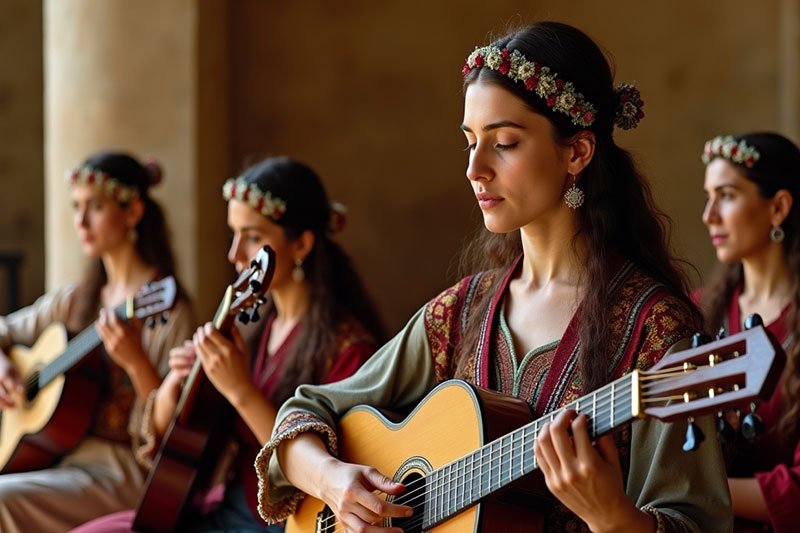
According to Iran’s ancient traditions, the seventeenth day of every month is named after the guardian yazata, Soroush, and on this day the Soroushgan festival was held. This day in the month of Farvardin had double value and splendor, where people held the Soroushgan festival with special magnificence. On such a day, Iranians worshiped and praised God and went to temples.
Among the gods, Soroush is known as the forerunner of worship and praise, because he was the first person who performed religious rites and composed the Gathas, the Zoroastrian hymns. The yazata Soroush has the mission of destroying demonic forces such as wrath, drunkenness, laziness, and lies. He brings the demon of anger and greed to its knees and, together with Mithra and Rashn, two other yazatas, judges the deeds of human beings and gives reward to the righteous and punishment to evildoers. Soroush is the ruler and judge of the world who has dominion over west and east. He is the guardian of life and, in guarding creation, always awake and vigilant, circles the world. The seventeenth day of every month is honored in respect of the yazata Soroush as the envoy of the beyond and representative of the gods.
Abu Rayhan al-Biruni wrote: Soroush was the first to call people to the worship of God. On this day, prayer and worship and going to the temple is a commendable act.
The background of the Bahmengan festival goes back to the Sasanian era and, until the Mongol invasions of Iran, was held as a common and widespread tradition. Abu Rayhan al-Biruni provides information about the Bahman festival in the book “al-Athar al-Baqiya”: “On the second day, a festival is held which is named in honor of Bahman, the angel in charge of animals and the needs of humankind for the cultivation of the earth; the name of this day is Bahmanjeh.
The people of Fars on this day cook various grains and meat and eat them with pure milk and believe that this food strengthens memory.
They also believe that Jamasp, the vizier of Goshtasp, on this day would pick plants by rivers and streams and be busy extracting oil. They believe that the benefits of these substances on this day are greater than on other days.
The philosophy of holding the Bahmengan festival, based on what is inferred from the texts of Biruni and Asadi Tusi, is a plant named Amshaspand. This plant became famous as Bahman and flowers in the month of Bahman or winter. Thus the Amshaspand plant is renowned in medicine and has been discussed in old medical texts such as Tohfat al-Hakim Mu’min and Bahr al-Jawahir.
It should be noted that this plant is the same ‘Behen’ which is very well known in France. In the past its roots, known as red and white Bahman, were used in European pharmacies.”
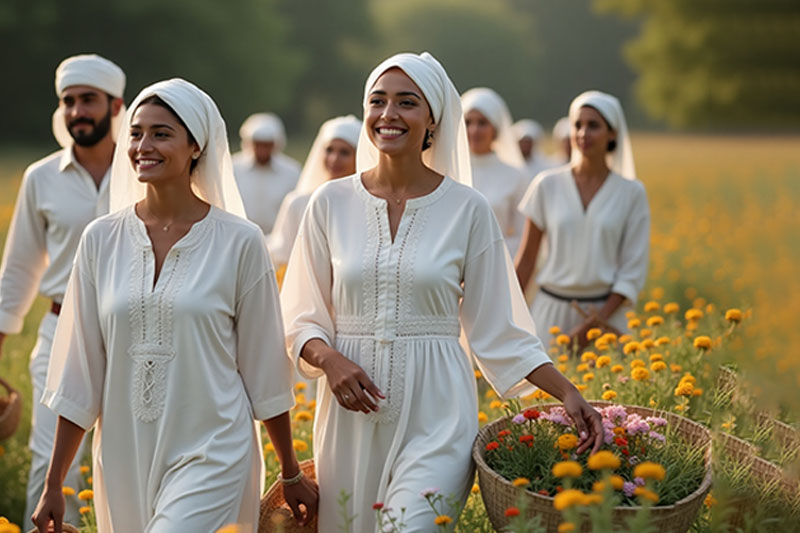
It may be interesting for you to know that in the Zoroastrian calendar, the third day of every month was named after Ordibehesht Can. In the ancient calendars of Iran, sometimes the second day of Ordibehesht was known as the Ordibehesht Can festival. On this day, people would go into nature to pick flowers and plants, and the next day, which was called the Ordibehesht Can festival, they would begin to rejoice.
The ancients of Iran dedicated the second day of Ordibehesht to an angel who was the symbol of truth and purity. On this festival they were reminded that they must preserve these good traits in their lives. Thus, for this occasion they wore white clothes, which signified purity and sincerity.
Another of Iran’s ancient festivals is the Khordadgan festival, which is held on the sixth day of the month of Khordad. On this day it is customary for people, together with friends and family, to go to rivers and seas and hold religious prayers in praise of Ahura Mazda and spend a time full of joy and cheer.
This festival was held in order to honor the blessing of water and to be aware of its importance in the Zoroastrian faith. For in this religion, water is the cause of the growth and nurture of all beings and brings about fertility. Some of the things done on this day included washing the body, digging new wells, and repairing irrigation channels.
In ancient days of Iran, the Amordadgan festival, known as the day of immortality, was held 127 days after Nowruz and in the fifth month of the Persian calendar, Mordad, which is derived from the word Amordad.
This ancient rite, which is more than four thousand years old, was performed in Zoroastrian times to honor the angel of immortality and the guardian of plants and the world on the seventh of Mordad.
The Shahrivargaan festival, also known as Azarjashn, is held every year on the fourth day of the month of Shahrivar and, in a way, is considered a remembrance of Father’s Day in ancient Iran. This festival is part of the twelve great monthly festivals in Iran and of the water festivals.
According to historical statements, this festival coincides with the birth of Shah-Darab (Darius) and Prophet Mani. On this day, ceremonies such as making fire, gatherings, and sharing food with those in need were held.

In distant eras, numerous festivals were held in the land of Iran, one of the most important of which is Mehregan, which was held at the beginning of autumn. According to the Avestan calendar, the year was divided into two parts: the great summer and the great winter, and Mehregan was celebrated as the beginning of the cold period.
This festival was divided into two kinds: the Lesser Mehregan, which was for the elite and nobles on Mehr 16, and the Greater Mehregan, which belonged to the general public and was held on Mehr 21. The 21st of Mehr is also associated with the remembrance of the victory of Kaveh the Blacksmith and Fereydun over Zahhak. This day is the commemoration of this victory and a symbol of the quest for independence against oppressors.
If the stories of the Shahnameh are attractive to you, they tell that Zahhak had two serpents on his shoulders, and to feed them he killed two youths every day. Kaveh the Blacksmith, grieving the loss of his children at Zahhak’s hands, spread his cry of protest among the people and, with the support of Fereydun, one of the heroes of the Shahnameh, on the 21st of Mehr overcame Zahhak’s tyranny. In fact, the festival of Fereydun’s victory over Zahhak has remained in memory on this sacred day.

The first day of the month of Dey is called Khorram Rooz. This festival is greatly respected among Zoroastrians and they regarded it as one of the attributes of the one Creator. They had named the coldest month of the year after Ahura Mazda. In fact, the Deygan festival was counted among the most important Iranian festivals. The time of holding this festival is on the cold nights of winter, which are blended with the pleasant warmth of the celebration. Both religious and non-religious traditions are connected with this day. In such a way that the ancients regarded it as the first day of the new year.
It may be appealing to you to know that in ancient Iran each day of the month was named after one of their deities. The Bahmengan festival is another of these splendid festivals that was held on the second day of the month of Bahman. Just as each month of the year in ancient Iran was dedicated to a deity, the Bahmengan festival in the Zoroastrian religion was dedicated to the Amesha Spenta Vohu Manah. Thus, in respect, thanks, and appreciation of this deity, this festival was held.
This Zoroastrian divinity is a symbol of knowledge and wisdom. In fact, when the day and the month became identical, on that day they engaged in joy and celebration. In that era, whenever the day and month coincided, that day passed in festivity and congratulations. Bahmangan was also among those times when, due to the coincidence of the day and the month of Bahman, it turned into the arena of celebration and revelry. Followers of the Zoroastrian religion had their own specific rules in this festival and refrained from eating meat.
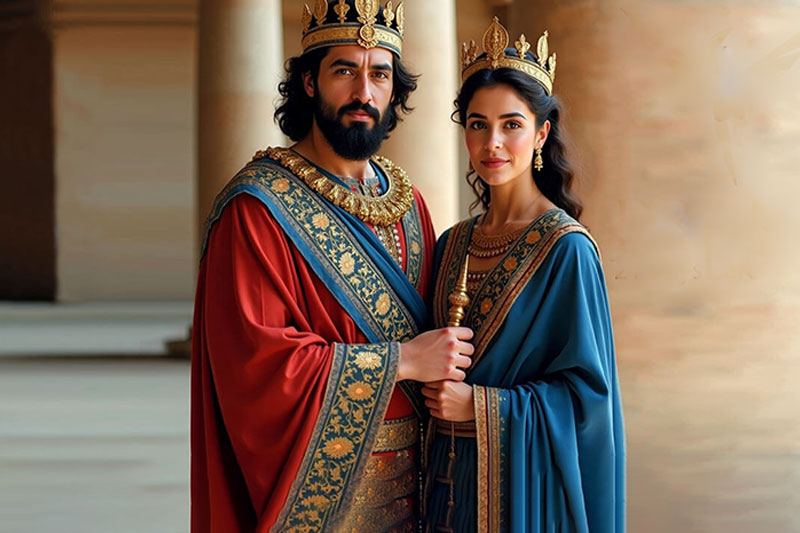
Love has long been the principal cultural heritage of Iranians. Love and affection—whether in the delightful lyric ghazals of Persian-speaking poets or on the path of Sufi mysticism toward the Lord—have for many years been imprinted in the heart and soul of Iran. In fact, long before Valentine’s Day, Iranians had Sepandarmazgan, or Esfandegan. Thus, the fifth of Esfand is a day for the celebration of love for Iranians.
The Sadeh festival is one of the oldest Iranian festivals, whose antiquity goes back 400 years. This festival is held on the tenth day of Bahman and, in the Zoroastrian-inhabited regions of Iran, is held with the utmost splendor. Zoroastrians believe that lighting fire is done with the intention of deliverance from the darkness of night and mingling with the joyful light and warmth of fire. Therefore, fire is the main and essential element in holding this festival. Special ceremonies are held in this festival, among them:
Our ancestors associated this holiday with Fereydun, the king of the Pishdadian era. When Fereydun prevailed over Zahhak, the people, for this glorious triumph, rejoiced, and at Fereydun’s command, kindled flames atop the roofs. It is mentioned in the Nowruz-nameh that in past ages the Sadeh rite was held by all the kings and rulers of Iran-zamin and Turan. However, over time this ceremony was consigned to oblivion and is performed solely by Zoroastrian followers. Abu Rayhan al-Biruni considered the reason for holding the Sadeh festival to be the repelling of calamity and harm.
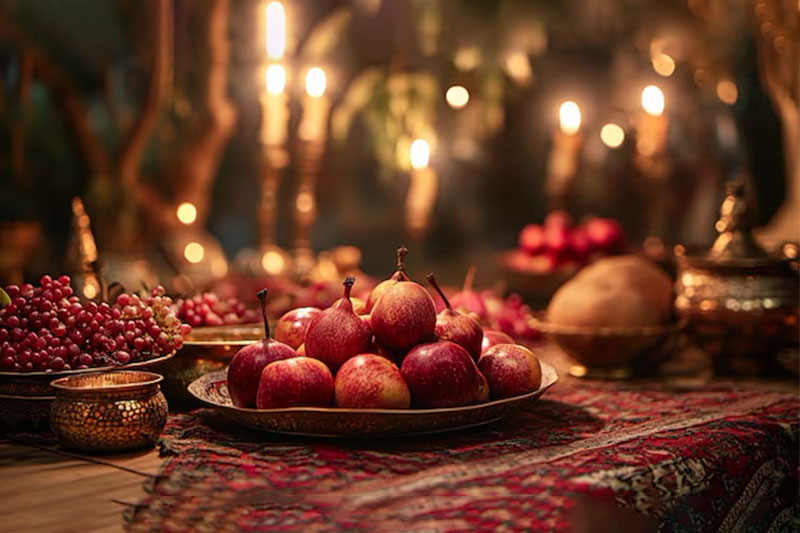
One of the most common ancient festivals of Iran, which has existed from the distant past until today, is the Yalda festival. This night is regarded as the longest night of the year and as the triumph of light over darkness and of good over evil. The rituals of this night are very beautiful and exciting. The whole family gathers on this night, and by eating nuts, sweets, and various fruits such as watermelon and pomegranate, they celebrate the night. Reading Hafez and reading the Shahnameh on Yalda night is very prevalent and reflects the rich and authentic Iranian culture.
The Nowsareh festival is held 5 days before the Sadeh festival and is counted among Iran’s ancient festivals. In fact, this festival is a prelude to holding a more magnificent festival. This ancient festival is still held in some cities of Iran, such as Shiraz, Yazd, and Kerman. The Nowsareh festival is held to give thanks to God, who is the source of light and life.
The Nowsareh festival is a prelude to the Sadeh festival and is held five days before this festival. This age-old tradition is very spirited and beautiful and is still held in cities such as Shiraz, Yazd, and Kerman. This festival is performed in order to give thanks to the bountiful Creator, who is the source of radiance and life.
Holding this festival has special rites, among which the following can be mentioned:
At flysepehran, we have created the conditions for you to enjoy a safe, memorable, and worry-free journey. In addition, we provide a wide range of services to our passengers, including seat selection, purchasing excess baggage allowance, and transporting pets. Ultimately, by choosing Sepehran, you can enjoy your trip without any concerns.